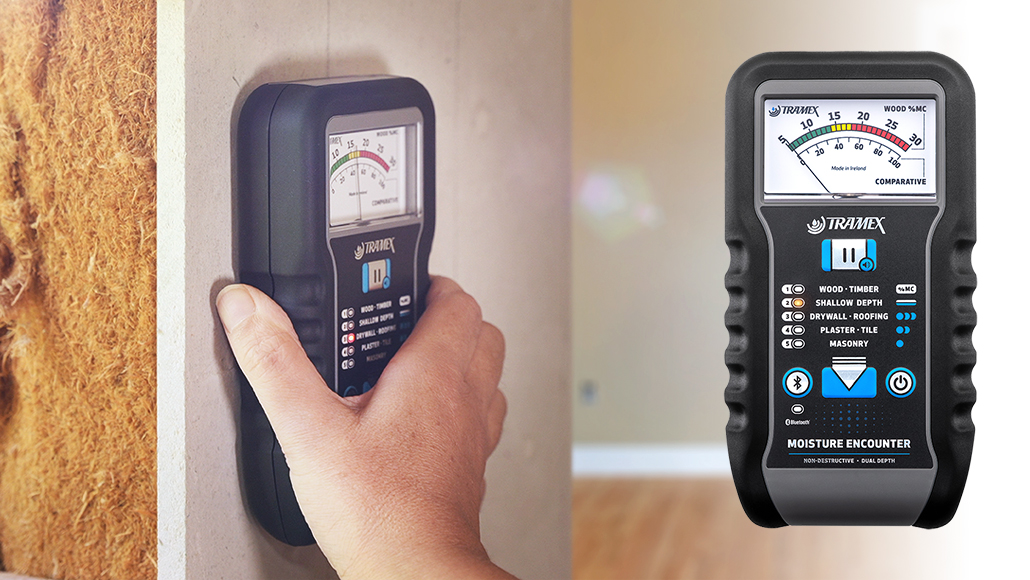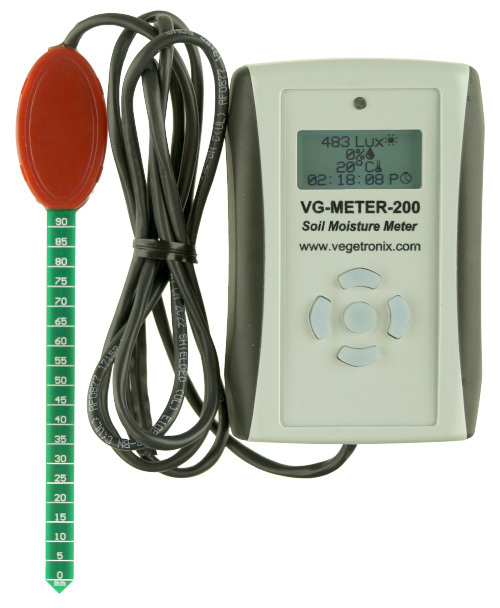Recognizing the Various Sorts Of Moisture Meters and Their Applications
Wiki Article
Explore the Globe of Dampness Meters: Every Little Thing You Need to Know
In the realm of moisture meters lies a world of precision and usefulness that often goes unnoticed. Understanding how moisture meters operate, the different types available, and their diverse usages can shed light on their significance in making sure high quality and effectiveness.Just How Wetness Meters Work
Wetness meters run by gauging the electric conductivity or capacitance of materials to establish the dampness material existing - Moisture Meter. These meters are invaluable tools throughout numerous industries, including building and construction, woodworking, and farming. By making use of various approaches such as pinless or pin-type modern technology, dampness meters give precise analyses that help specialists make informed choicesPin-type moisture meters work by putting the sharp pins right into the product being checked. On the other hand, pinless moisture meters utilize electro-magnetic signals to scan a larger area without creating any damages to the material's surface.
No matter the approach made use of, dampness meters play a critical function in preventing issues such as mold and mildew development, structural damage, or product problems brought on by excess wetness. Comprehending exactly how these meters work is vital for making sure the high quality and stability of materials in various applications.
Kinds Of Moisture Meters
Offered the important function moisture meters play in various sectors, it is necessary to recognize the various types available to specialists for precisely examining wetness levels. There are largely 2 primary sorts of dampness meters: pinless and pin-type wetness meters.
Pin-type moisture meters make use of 2 pins that are inserted right into the material being examined to gauge the electrical resistance in between them. This method is commonly made use of for wood, drywall, and various other building products. Pin-type meters offer specific analyses at specific midsts, making them suitable for identifying dampness gradients.
On the various other hand, pinless moisture meters make use of electromagnetic sensing unit plates to scan a bigger location of the product without causing any type of damage. This type appropriates for promptly scanning large locations and is commonly utilized for flooring, wall surfaces, and ceilings. Pinless meters are convenient for taking readings on finished surfaces without leaving any kind of visible marks.
Both kinds of wetness meters have their benefits and are picked based on the certain needs of the job available. Understanding the differences in between these types is vital for professionals to make exact moisture assessments.
Applications Across Industries
With varied performances, wetness meters locate widespread application across numerous industries, helping professionals in making certain optimal conditions for structures and products. In the farming sector, wetness meters are invaluable for figuring out the dampness content in grains, seeds, and hay, making sure quality assurance and preventing mold development. Building and construction professionals depend on dampness meters to assess the wetness degrees in structure products like concrete, timber, and drywall, which is vital for keeping architectural honesty and protecting against issues like rot or mold. The flooring industry utilizes moisture meters to measure the moisture material in subfloors before installing various floor treatments, protecting against pricey problems because of excess moisture. Furthermore, in the food industry, dampness meters are utilized to keep track of and control moisture degrees in items such as grains, nuts, and dried fruits to maintain quality and high quality. Furthermore, moisture meters play an essential function in the remediation and damage control industry by aiding experts identify and address water damage in structures immediately. Across these varied markets, moisture meters are crucial devices for guaranteeing the top quality, security, and longevity of numerous materials and products.Tips for Utilizing Moisture Meters
Make use of the dampness meter's calibration setups to make certain precise analyses when determining the wetness material in numerous products. Furthermore, make certain the meter is established visit our website to the proper moisture range for the product you are measuring to acquire the most exact results.
When making use of a pin-type wetness meter, insert the pins to the appropriate deepness suggested for the product being evaluated. This guarantees that the wetness analyses are extracted from the proper deepness within the product, supplying a much more precise representation of its moisture web content. For pinless dampness meters, bear in mind to keep appropriate contact with the material's surface area to obtain trusted analyses.

Regularly examine and replace the batteries in your wetness meter to avoid inaccurate analyses due to reduced power. Store the meter in a dry and secure location when not in usage to extend its lifespan and preserve its accuracy. By following these pointers, you can optimize the performance of your wetness meter and get exact dampness material dimensions across various products.

Upkeep and Calibration
To make sure the accuracy of wetness content dimensions, normal maintenance and calibration of the dampness meter are vital actions in its proper performance. Calibration readjusts the dampness meter to ensure that it gives reputable and regular results.Calibration should be carried out occasionally, especially if the wetness meter is made use of regularly or in vital applications where precise measurements are called for. Many wetness meters include calibration devices or can be calibrated by expert solutions - Moisture Meter. It is recommended to keep a log of calibration days and results to track the performance of the wetness meter with time. By adjusting the moisture and preserving meter regularly, users can trust the accuracy of the moisture material dimensions acquired.
Verdict
Finally, wetness meters play a vital duty in numerous markets by precisely determining the wetness content of materials. Understanding exactly how these gadgets work, the find out here now different kinds readily available, and proper maintenance and calibration are important for acquiring reputable results. Whether in production, farming, or building and construction, making use of moisture meters helps guarantee quality assurance and effectiveness in procedures.Building specialists depend on dampness meters to evaluate the dampness levels in structure products like wood, concrete, and drywall, which is vital for maintaining structural honesty and blog avoiding problems like rot or mold and mildew. The flooring market makes use of moisture meters to determine the dampness content in subfloors before installing different flooring treatments, avoiding expensive problems due to excess moisture.Utilize the wetness meter's calibration setups to ensure accurate analyses when gauging the moisture content in different products. By adhering to these suggestions, you can maximize the performance of your wetness meter and get precise moisture material dimensions throughout various products.
In conclusion, wetness meters play a vital duty in various industries by precisely determining the wetness web content of products.
Report this wiki page